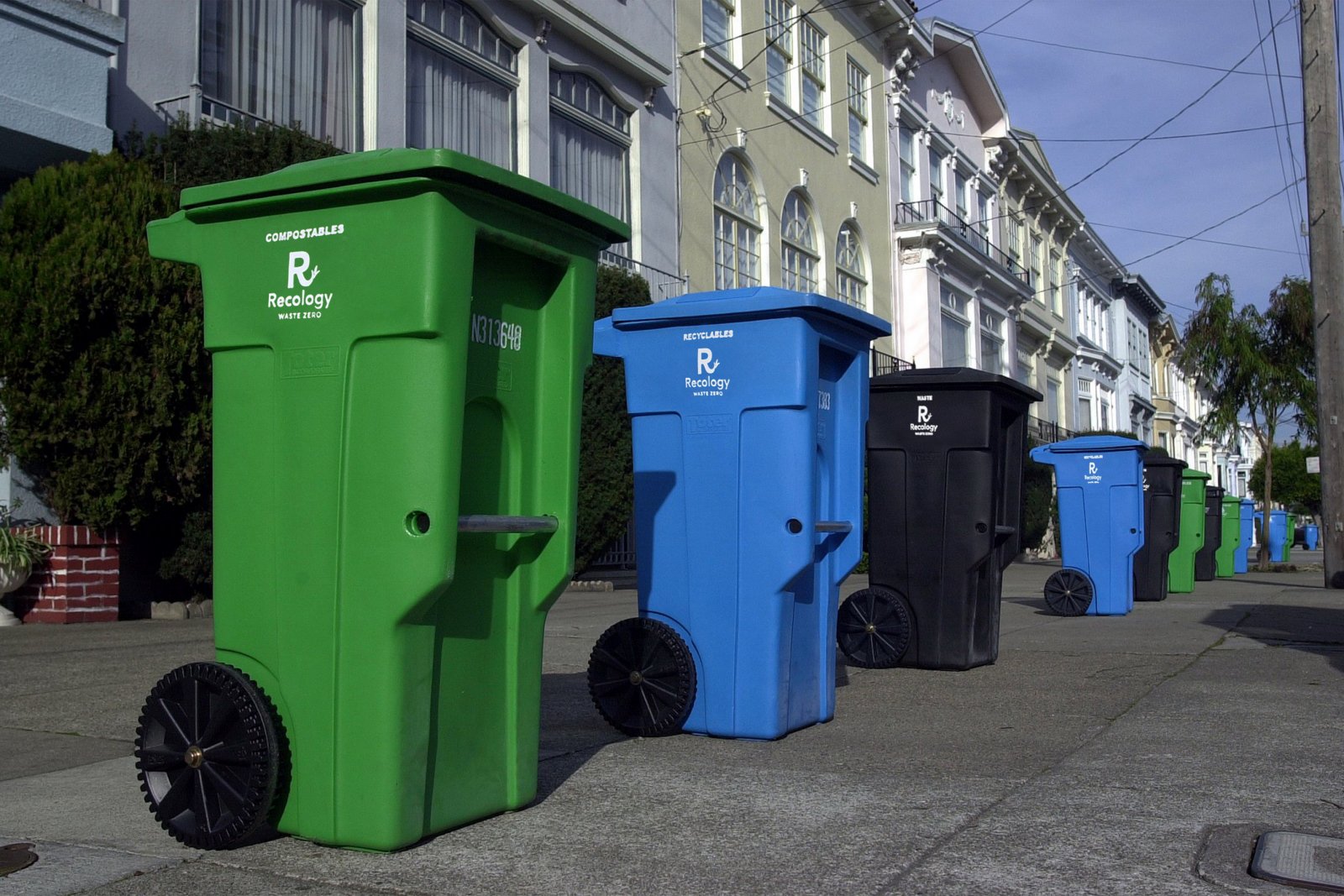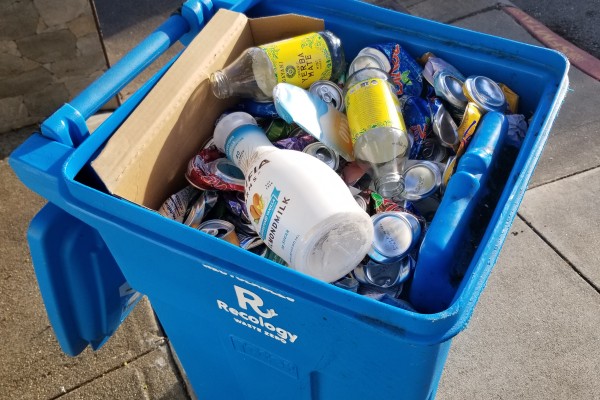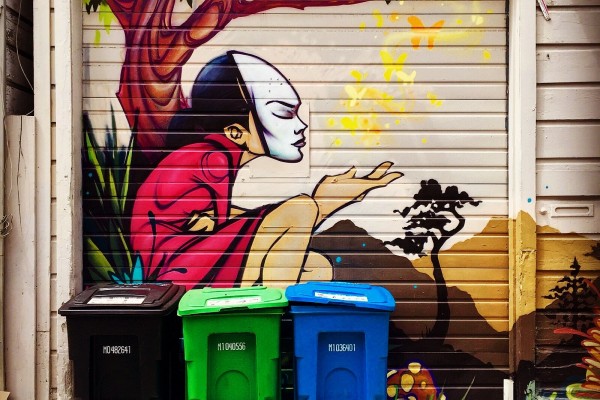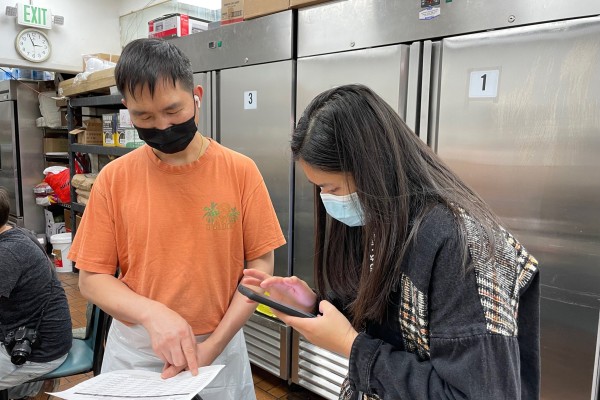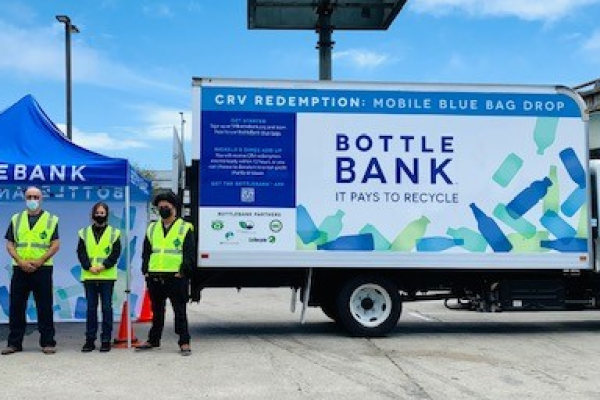What is Zero Waste?
Zero waste means products are designed and used according to the waste reduction hierarchy (prevent waste, reduce and reuse first, then recycle and compost) and the principle of highest and best use, so no material goes to landfill or high-temperature destruction.
Is zero waste possible?
We believe achieving zero waste is possible. To strive for zero waste, the San Francisco Department of the Environment will continue to advocate for state legislation and partner with producers to develop an extended producer responsibility system, where producers design better products and take responsibility for the entire life-cycle of a product, including take-back and recycling.
In addition, the San Francisco Department of the Environment encourages consumer responsibility, where residents reuse items and purchase materials with recycled content and that can be recycled or composted. The Department of the Environment continues conducting outreach and education to increase awareness about reducing, reusing, and recycling and composting.
What are some common items residents often put in the wrong bin?
- Soiled paper (used paper napkins or used tissue paper). Soiled paper is often thrown in the blue recycling bin because residents think all paper is recyclable. Soiled paper should go in the green compost bin.
- Plastic bags. Some people collect their compostables in plastic bags and toss the whole bag in the green bin. Plastic bags are not compostable in San Francisco’s green bin. Compostable containers for collecting food scraps include paper bags or BPI certified compostable bags. You can recycle plastic bags by visiting sfrecycles.org to find the closest grocery stores accepting plastic film for recycling.
- To-go containers. Residents may leave large amounts of food in to-go/delivery containers (plastic clamshell containers or aluminum foil) and place these containers in the blue recycling bin or the green compost bin. The correct way is to remove and compost any leftover food and then recycle or compost the container. Find out more about commonly misplaced items on SFrecycles.org.
For the most part, residents in San Francisco know the basics of sorting their trash and the Department of the Environment continues outreach efforts to spread awareness about which items go in each bin.
What are the biggest barriers the City faces with regards to zero waste?
Trash chutes: Because more than half of the city lives in apartments, those with trash chutes pose a big challenge. Apartment dwellers must walk recyclables and compostables down to the basement or garage. However, City policy now requires new apartments to provide 3 separate chutes or a 3-way chute diverter to accommodate recycling, composting, and landfill material. The Department encourages property managers to close chutes, but they are often reluctant to do so for fear of “decreasing services.”
Fear of smells or insects: Another challenge is encouraging residents and businesses to overcome fear that composting food scraps will attract insects or smell bad. People can use compostable bags (certified compostable plastics, or paper) or another compostable container such as a milk carton to keep bins clean. That “smelly” food is the same refuse as before, just grouped in its own bin.
What prompted San Francisco to push for zero waste?
After San Francisco successfully achieved the state-mandated 50% landfill diversion by 2000, San Francisco wanted to extend its commitment to zero waste. We exceeded our goal of 75% diversion from landfill and incineration two years early and at the Global Climate Action Summit, in September 2018, updated the zero waste goal to these two pledges:
- Reduce municipal solid waste generation by 15% by 2030 (reducing what goes to recycling, composting, and trash).
- Reduce disposal to landfill and incineration by 50% by 2030 (reducing what goes in the black trash bins).
Increasing recovery and pursuing zero waste achieves three key sustainability goals:
- Conserves valuable resources
- Reduces environmental impacts, such as climate change and pollution
- Creates green jobs
When materials are not reused or recycled or composted and instead sent to the landfill and incineration, valuable resources are wasted and greenhouse gases are emitted into the atmosphere. Compostable materials, like food scraps and yard trimmings that are sent to landfills produce methane, a potent greenhouse gas which is up to 72 times more potent than carbon dioxide. Applying compost sequesters carbon from the atmospehere into the future. San Francisco’s Zero Waste program significantly reduces these emissions, making it an essential component in achieving the City’s ambitious greenhouse gas reduction goals.
In addition, recycling and composting greatly increase the amount of materials available to make new products, reducing the need to extract more virgin materials. Food scraps create nutrient-rich compost – a natural fertilizer - to help grow fruits and vegetables in local farms. Compost also helps farms retain water, a precious resource.
San Francisco’s zero waste program benefits the economy, as composting and recycling save residents and businesses money and create green jobs (PDF).
What is the role of San Francisco City Departments in achieving zero waste?
The San Francisco Department of the Environment and the San Francisco Department of Public Works partner with Recology, the city’s refuse hauler, to move towards the City’s zero waste goal.
The Department of the Environment creates zero waste policies and works with Recology to develop programs and technologies that reduce the amount of material sent to landfill. The Department of the Environment is responsible for program outreach, education, and policy compliance. Residents and businesses participate in the City’s programs with tools like an online recycling database, and color-coded signage. In addition, on-site multi-lingual training is available for businesses and apartment buildings.
The Department of Public Works oversees the refuse rate setting process and helps set residential and commercial rates. The Department of Public Works, along with the Department of Public Health, are also responsible for enforcing adequate refuse service laws.
How does the City accomplish zero waste?
The City of San Francisco has adopted a variety of policies which have helped the city move toward accomplishing the goal of zero waste. Most important to the City’s success is the Mandatory Recycling and Composting Ordinance, which went into effect on October 21, 2009. It requires San Francisco residents and businesses to properly sort recyclables from compostables and keep them out of the trash to landfill and place them in the proper collection containers. The Environment Department's Environment Now team conducts extensive, multilingual and door-to-door outreach to residents and businesses regarding composting and recycling education.
The Department of the Environment staff work with Recology, the city’s hauler, to ensure that businesses have composting and recycling bins. If they do not, the Department sends them a letter advising them to order composting and recycling service. The Department of the Environment then follows up in person to ensure compliance.
In addition, the Department of the Environment created SFRecycles, a recycling database for residents to find information on how to recycle almost anything in San Francisco. The Signmaker tool is another resource for residents and businesses to make their own recycle, compost, and landfill signs.
The Department of the Environment prioritizes education and outreach to encourage compliance, rather than impose fines. Face-to-face outreach has proven effective in helping residents and businesses become compliant with laws. However, the City can impose fines to repeat offenders.
The Department of the Environment, which works with businesses and residents all over San Francisco, has found that the community continues to be very positive and supportive of the City’s zero waste goals. San Francisco residents take great pride in their city and are passionate about taking care of it. This attitude has helped integrate sustainability into San Francisco’s culture.
What is the “Fantastic Three” program?
The Fantastic Three program is a term sometimes used to refer to San Francisco’s easy-to-use three bin system. Each resident and business has three bins:
- Blue bin for recyclables
- Green bin for compostables
- Black bin for landfill-bound material
What are the costs associated with the city’s Zero Waste program?
San Francisco’s zero waste program is funded solely from revenue generated through refuse rates charged to customers. This revenue sustains material collection, processing, disposal, hazardous waste collections, all outreach and marketing materials, as well as some programs within the Department of the Environment and the Department of Public Works.
The cost of collecting compostables, recyclables, and landfill-bound materials is about the same. While maybe more expensive to process, recyclables are baled and sold to their respective markets and the compostables are processed and transformed into nutrient-rich compost, which is sold to local farms. Landfill-bound materials are processed less but are charged by weight and dumped in the landfill with no return on investment.
Has the program been successful?
San Francisco has a world-class zero waste program. The City’s three bin system, policies, financial incentives, and extensive outreach to residents and businesses, helped San Francisco achieve the highest recovery rate of any major city in North America.
Are there any best practices San Francisco uses for implementing its zero waste strategy?
- A convenient, easy-to-use three bin system
- Economic incentives for residents and businesses to recycle and compost
- Policies that promote zero waste goals
- Extensive outreach and education to residents and businesses about recycling and composting
Why is there no competitive bidding for Recology’s contract with the City?
The Refuse Collection and Disposal Ordinance adopted in 1932 established a system operated by collection companies that hold exclusive permits to collect refuse in the streets of San Francisco. This ordinance created a City-regulated utility model and outlines a provision of service most recently ratified by San Francisco voters in June of 2012. At this time, Recology is the sole holder of all permits to collect refuse.
What is the compost process at Recology’s composting facilities?
After compostables are collected, they are sent to a nearby compost facility, they are:
- Screened for plastics, glass, and other non-compostable items
- Ground to facilitate the micro-organisms in breaking down the material
- Processed into rows in a 2-stage system: first covered, then in open rows, and finally cured for the ideal final product.
- The finished product is screened and marketed to local farmers.
Could other cities emulate San Francisco? Have they?
SFE staff often consult with other cities to share best practices. San Francisco was the first city in the nation to establish a large scale food collection composting program starting in the 1990s and in 2009 implemented a policy of mandatory recycling and composting (including food) for both residents and businesses. Hundreds of cities around the US, including most of the San Francisco Bay Area, are establishing food composting programs and many are interested in San Francisco’s mandatory policy as well.
In addition, San Francisco was the first in the nation to ban single use plastic checkout bags in 2007. Already, over 75 California cities and counties have followed San Francisco’s lead.
Additional resources
- News: San Francisco's Trash Inspectors Get Up Earlier Than You Do (The Atlantic)
- News: The End of Trash (San Francisco Magazine)
- Case Study: Zero Waste Program of San Francisco (Governments Going Circular)
